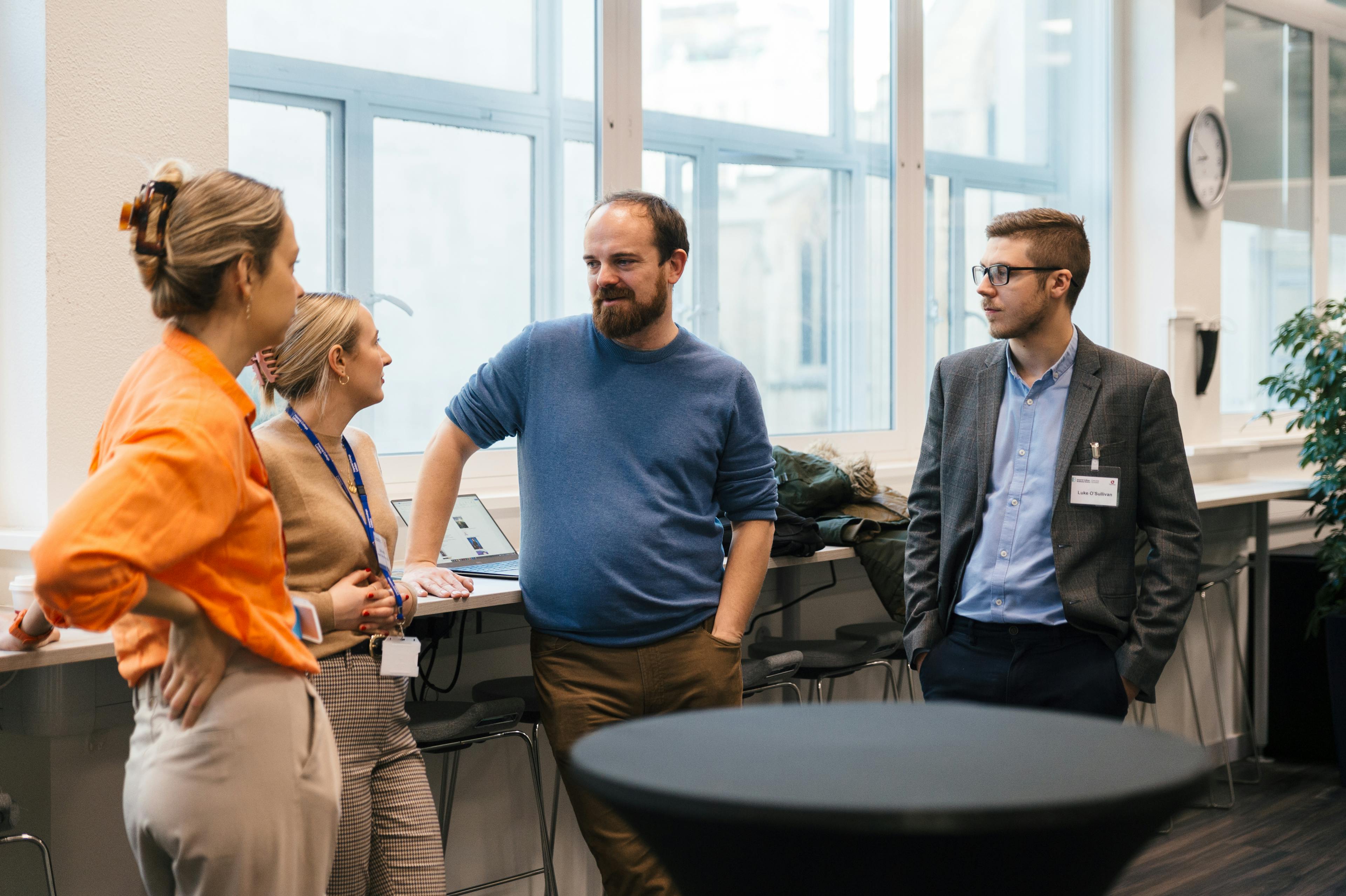“Since completing my apprenticeship, I’ve been promoted to team manager. I don’t think I would have been able to achieve this without the knowledge and skills gained from this course.”

When Abbey Clayton, Quality and Control at Capita, began her apprenticeship with Corndel, she had little project management experience.
She saw it as a chance to grow — professionally and personally. Since graduating, she’s been promoted to team manager, successfully delivered a project, and had it implemented in the business.
As Abbey says: “I wouldn’t be in my current position without the experience gained on the apprenticeship.”
Her story shows that career success - and social mobility - doesn’t have to follow a traditional path. By nurturing internal talent and offering alternative routes to upskill, organisations can break down the barriers long associated with higher education.
With social mobility in the UK at a critical low, the need is clear. At Corndel, we believe education should be a vehicle for opportunity - accessible to all, and transformative for both individuals and organisations.
Our research shows a clear gap. While 85% of HR and L&D leaders believe apprenticeships are one of the most effective ways to boost social mobility, only two-thirds plan to use them in the year ahead.
That’s untapped potential - and a missed opportunity for organisations serious about driving social mobility.

Most HR and L&D leaders agree: apprenticeships are one of the most effective tools for driving social mobility. Yet fewer plan to use them. That gap is a missed opportunity.
The Apprenticeship Levy is more than a funding mechanism - it’s a catalyst for transformation. At Corndel, we see this every day: only 47% of our apprentices held a degree before starting, but many leave with new confidence, new responsibilities, and new career prospects. After completing our Level 3 Management Apprenticeship, for example, 29% received a pay rise, 53% gained more responsibility, and 63% felt ready to take the next step in their career.
These aren’t abstract outcomes - they’re proof of the life-changing impact apprenticeships can have when used strategically. They give people real opportunities to advance, even when traditional education routes aren’t accessible. And when combined with wider EDI initiatives, apprenticeships can help organisations create a more diverse, inclusive, and future-ready workforce.
There’s clear appetite among HR and L&D leaders to use the Apprenticeship Levy to boost social mobility. The challenge lies in moving from intent to action - navigating stakeholders, designing measurement, and embedding programmes into wider strategies. That’s where the right partner can make all the difference.
Our social mobility report in the UK shows that 43% of businesses do not currently measure social mobility and that difficulties in measuring were the primary reason why. It’s clear that there’s still some work to be done in this area.
There's a clear need for guidance and support for businesses on how to measure social mobility. The Social Mobility Commission refers to measurement as "the critical first step".

HR teams can...
- Collect data on the socio-economic background of employees and potential recruits. This data can be collected through surveys, interviews, or other means. The Social Mobility Commission has guidance around potential questions that could be used.
- Track the representation of people from different socio-economic backgrounds at all levels of the organisation. This data can be used to identify areas where there is underrepresentation.
- Measure the progression of people from different socio-economic backgrounds through the organisation. This data can be used to identify barriers to progression and develop targeted interventions.
- Compare the socio-economic background of employees to the socio-economic background of the local population. This data can be used to assess the diversity of the workforce relative to the local community.
Apprenticeships vs degrees: the landscape is shifting
UK businesses are rethinking what opportunity looks like. Two-thirds plan to use apprenticeships to boost social mobility in the year ahead - with 85% of HR and L&D leaders agreeing they’re one of the most effective tools we have.
When it comes to hiring, apprenticeships are now valued on par with degrees (83% vs 81%), and degree apprenticeships are increasingly seen as a way to level the playing field - over a quarter of businesses will build them into recruitment strategies.
The impact is already visible: in the organisations we surveyed, 45% of senior leaders are from diverse social backgrounds, and 40% didn’t go to university at all. Social mobility is possible - and apprenticeships are accelerating it.
This social mobility report in the UK also shows there’s clearly an appetite amongst the HR and L&D community to improve social mobility in UK organisations. The Social Mobility Commission state apprenticeships can be an effective way to do this – so what can HR and L&D teams do to make it happen?

Thinking bigger about social mobility
Phase 1
Resource the team properly - a multimillion-pound levy doesn’t manage itself
Ensure clear management accountability for optimising the Levy and allocate appropriate resources to:
- Develop a levy maximisation strategy
- Properly implement it
- Manage it on an ongoing basis
- Review and adjust the strategy based on progress
Phase 2
Have a clear, ambitious, long-term strategy. With resources in place, develop a clear strategy that:
- Is long term, bold and clear (for example, over the next 3 years we are going to invest £4 million of our levy in developing X, Y and Z corporate capabilities to support our business objectives)
- Is clear about the intended business impact - to improve social mobility
- Has board approval and buy-in – it’s a multimillion-pound investment in your people and EDI strategy
Phase 3
Integrate, join up and communicate - HR and L&D leaders should:
- Actively champion the understanding of what an apprenticeship can be within the organisation and raise the profile of social mobility and its importance
- Ensure that the strategy for spending the levy is integrated within the organisation’s other HR and L&D functions
Phase 4
Seek commitment and buy-in to levy-funded programmes and social mobility more generally, from across the whole business.
Actively involve, seek endorsement and build champions for the organisation’s levy strategy. If the levy strategy is aligned with equality and diversity corporate objectives and backed by senior stakeholders, the pace at which it can be mobilised will be far quicker and its long-term impact much greater.
The UK is at a turning point on social mobility. Our research shows the apprenticeship levy is far more than a funding requirement — it’s an untapped opportunity to drive real progress. Forward-thinking businesses are already putting social mobility at the heart of their EDI strategies, and the potential impact is huge.



